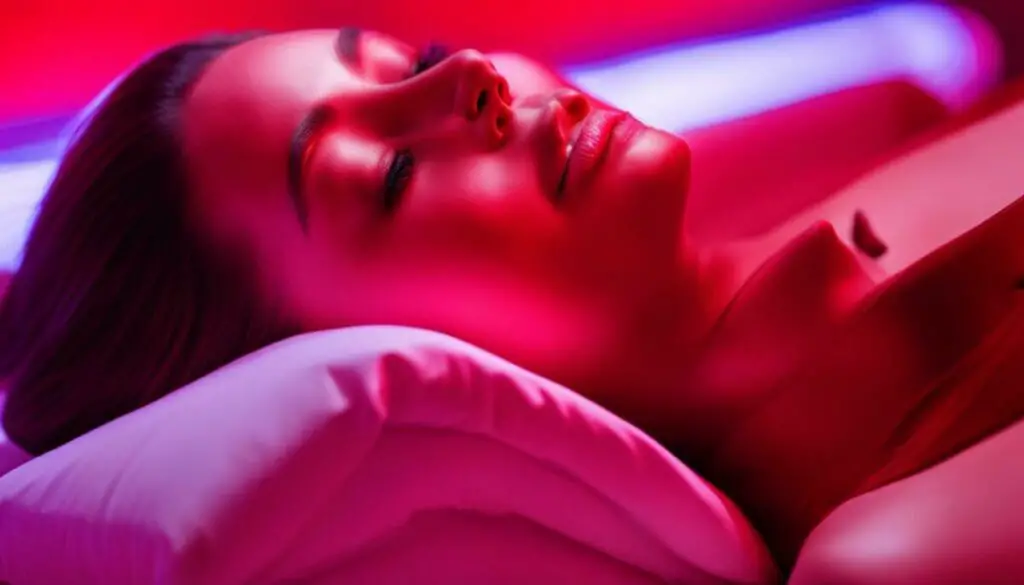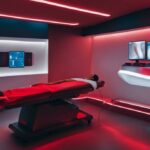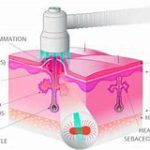LED light therapy has become increasingly popular in recent years as a non-invasive, painless way to improve various skin conditions, reduce inflammation, and promote collagen production. However, with so many different types of LED devices on the market, it can be difficult to determine whether or not this type of therapy is truly effective. In this discussion, we will examine the scientific evidence surrounding LED light therapy to determine whether or not it is a worthwhile treatment option for those looking to improve their skin health.
Contents
The Science Behind LED Light Therapy
LED light therapy is a non-invasive treatment that uses specific wavelengths of light to penetrate deep into the skin and promote healing. This technology has been used for years to treat a variety of skin conditions, including acne, wrinkles, and hyperpigmentation. The science behind LED light therapy is based on the principle of photobiomodulation. This means that the light energy from the LED lights is absorbed by the cells in the skin, which then triggers a series of biological processes that promote healing and repair.
How Does LED Light Therapy Work?
LED light therapy works by targeting specific cells in the skin, such as fibroblasts, which are responsible for producing collagen and elastin. When exposed to the LED lights, these cells are activated, which increases their production of these important proteins. This, in turn, helps to improve the tone and texture of the skin, reduce wrinkles and fine lines, and promote a more youthful appearance.
Different Colors of LED Light Therapy
There are several different colors of LED lights used in light therapy, each with its own specific benefits. Red LED lights are commonly used to promote collagen production and reduce inflammation, while blue LED lights are used to kill acne-causing bacteria. Green LED lights are used to reduce hyperpigmentation and age spots, while yellow LED lights are used to reduce redness and inflammation.
The Benefits of LED Light Therapy
LED light therapy has several benefits beyond just improving the appearance of the skin. It has been shown to be effective in reducing pain and inflammation, improving mood and sleep, and even promoting hair growth.
Pain Relief
LED light therapy has been shown to be effective in reducing pain and inflammation in a variety of conditions, including arthritis, fibromyalgia, and carpal tunnel syndrome. This is because the light energy from the LED lights helps to reduce inflammation and increase circulation, which can help to promote healing and reduce pain.
Mood and Sleep Improvement
LED light therapy has also been shown to be effective in improving mood and sleep. This is because the light energy from the LED lights helps to stimulate the production of serotonin, a neurotransmitter that is important for regulating mood and sleep.
Hair Growth
LED light therapy has also been shown to be effective in promoting hair growth. This is because the light energy from the LED lights helps to stimulate the hair follicles, which can help to promote hair growth and reduce hair loss.
The Effectiveness of LED Light Therapy
While LED light therapy has shown to be effective in treating a variety of conditions, it is important to note that its effectiveness may vary from person to person. Some people may see significant improvements in their skin or pain levels after just a few treatments, while others may need to undergo several treatments before seeing any noticeable results.
Factors That Affect the Effectiveness of LED Light Therapy
Several factors can affect the effectiveness of LED light therapy, including the type of skin condition being treated, the severity of the condition, and the frequency and duration of the treatments. It is also important to use high-quality LED lights and to follow the recommended treatment protocols to achieve the best results.
Potential Side Effects of LED Light Therapy
While LED light therapy is generally considered safe, there are some potential side effects to be aware of. These may include redness, swelling, and irritation of the skin, as well as headaches and eye strain from prolonged exposure to the LED lights.
FAQs for the topic: is led light therapy effective?
What is led light therapy?
LED light therapy is a non-invasive treatment that uses different wavelengths of light to stimulate natural cellular processes, improve skin conditions, and alleviate pain. It involves exposing the skin to low-level LED light using a specially designed device called a light-therapy lamp.
LED light therapy works by penetrating the skin at different depths to target specific cells and tissues. When the skin absorbs the light, it triggers the release of chemical messengers called cytokines, which stimulate cellular repair and regeneration, reduce inflammation, and improve blood flow. Depending on the wavelength, it can also activate collagen production, increase the production of ATP (cellular energy), or kill acne-causing bacteria.
What are the benefits of led light therapy?
LED light therapy provides a range of benefits, such as improving skin texture, reducing fine lines and wrinkles, minimizing acne, diminishing scars, and reducing pain and inflammation. It also aids in wound healing, reduces the appearance of hyperpigmentation, and improves overall skin health.
Is led light therapy effective for all skin types?
Yes, LED light therapy is safe and effective for all skin types, including sensitive skin. It is a non-invasive treatment that does not harm the skin, unlike other cosmetic procedures like chemical peels, microdermabrasion, and laser treatments.
How many treatments are required to see results?
The number of treatments required to see results varies depending on the condition being treated and the severity of the issue. However, most people notice a visible improvement in their skin after a few sessions. A typical course of treatment can range from 4-12 sessions spread over several weeks.
Are there any side effects of led light therapy?
LED light therapy is a safe and effective treatment with no known side effects. Unlike other cosmetic procedures, it is non-invasive and does not require downtime or recovery time. However, individuals with light sensitivity or underlying health conditions should consult their doctor before undergoing LED light therapy.
Is led light therapy covered by insurance?
LED light therapy is considered as an elective cosmetic treatment and is not typically covered by insurance. However, some insurance providers may cover the cost of the treatment if it is deemed medically necessary. It is best to check with your insurance provider to determine their coverage policies for LED light therapy.







